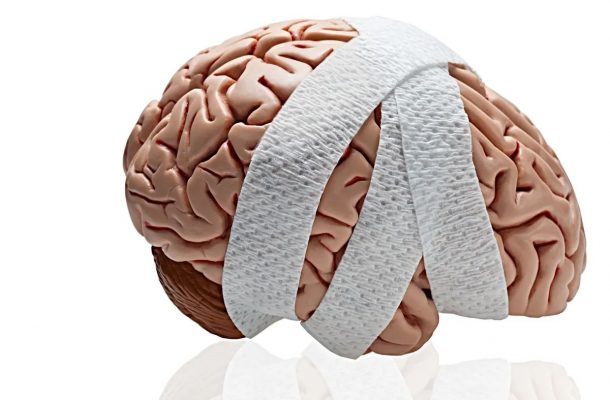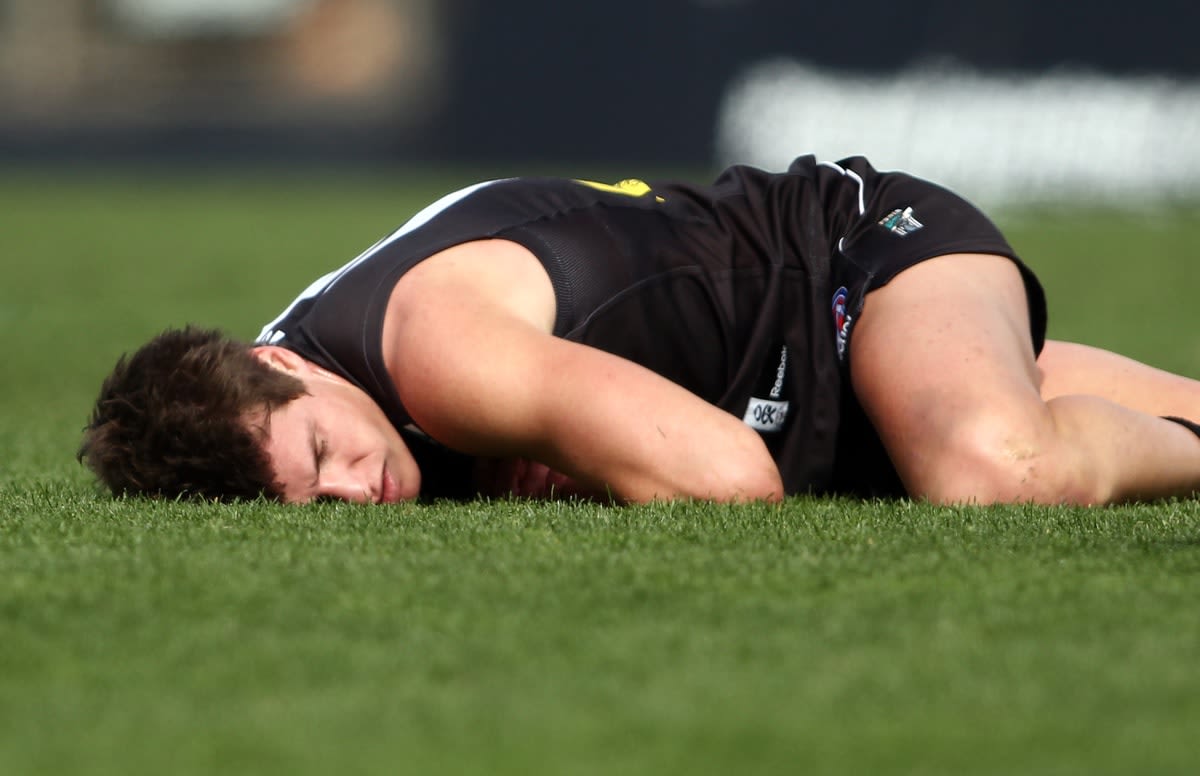Coming to a head

Even the New York Times knows about concussion and Australian football. In an article last year, it described footy “one of the world’s most violent sports” where players generally don’t wear headgear, only mouthguards, and “concussions are common” – the statistic is about 60 a year in AFL.
The story was published during grand final week. It referred heavily to the US experience, where “retired American football players struggling with neurological problems forced the NFL to confront its traumatic brain injury crisis”.
Now it was Australia’s turn.
The dire warnings of a direct link between concussion in footy and brain problems later in life are, however, too soon, according to a Monash research team that has conducted the first in-game study on head impacts in elite footy.
The study found, in part, that male players appeared to cop more frequent head impacts than females, but female players sustained more impacts in marking contests, for example.
Concussion is tricky to study and measure, because it doesn’t show up under any typical clinical imaging methods, or reliably in blood or saliva.
As Good Weekend magazine reported last year, it’s “only diagnosed through an examination of overt symptoms such as dizziness and confusion. These symptoms can manifest instantaneously – or hours later. They can linger for months – or disappear within minutes.”
A flurry of rule changes in 2008, 2009 and 2010 were aimed at protecting players’ heads. But the issue remains because the condition is hard to detect, and the science, while improving, is incomplete. And, football is football. The coaching mantras are “first to the ball”, “head over the ball”.

The Monash team attached sensors behind the ears of 210 male and female players from 17 AFL and AFLW clubs in single matches during the pre-season tournaments. The study was in partnership with the AFL. The technology has limitations – for now – if the players don’t wear helmets, as they do in the NFL.
“It enabled us to undertake this initial pilot trial at the elite level,” says Associate Professor of Neuropsychology Catherine Willmott, of Monash’s Turner Institute for Brain and Mental Health.
“It’s very important that sensor technology and research is developed further, with additional video verification of the head impacts. It has to be rigorous and validated.”
Jury still out on long-term effects
Associate Professor Willmott says the jury is still out on long-term neurological damage after concussion from football. Despite this, a large group of former AFL players is planning to sue the league in a class action, and recently it was reported that former footballer Danny Frawley, who died last year, was suffering from stage II chronic traumatic encephalopathy.
“If you believe all the media reports, you would think that every player that gets concussed is necessarily at risk of developing dementia as a result of football,” she says.
“But we don’t know. The biggest problem is the research that hasn’t been done. We need to look at all the other risk factors for players – familial and personal risk factors, drug and alcohol issues, unrelated medical factors that come about after retirement, and –very importantly – study players prospectively.
“The jury is out about the risk of repetitive head impacts in Australian football. This research is still being done, and the questions are yet to be definitively answered. It might turn out to be the case that getting concussed in football is a risk factor, but we’re nowhere near proving that yet. There is little evidence to date.”
The Monash research team was led by Associate Professor Willmott, Dr Jonathan Reyes (as part of his doctoral studies) and Professor Biswadev Mitra, who’s Director of Emergency Medicine Research at Alfred Health, and a professor in the School of Public Health and Preventive Medicine. They undertook a pilot study on amateur footballers in Melbourne in 2015.
Key findings from their most recent study were:
-
Marking, contested ball and tackling situations were most commonly associated with head impacts. Marking was the most common.
-
Player field position or experience weren’t associated with head impact exposure. In other words, it didn’t matter what position the players were, or how long they had played.
-
Males recorded more impacts compared with female players.
-
Female players had twice as many impacts to the head while marking the football.
-
The majority of head impacts didn’t result in an observed injury or player discomfort, and only two (male) players were diagnosed with concussion.
Why do women playing AFLW suffer more blows to the head in marking contests? Good question. Associate Professor Willmott thinks it may be to do with differences in skills development.
“Some women in AFLW have come across from other sports – elite hockey or netball or basketball – so the skill development in terms of marking safely and protecting the head in the mark may differ.
“That will change over time, and a six-year-old girl now has the opportunity to have the same skill development as males, but that hasn’t always been the case. This is only
one hypothesis and remains to be tested, again highlighting the need for further research in the field.

Dr Reyes points to key differences in player positions in codes such as the American NFL, where certain positions are targeted by the opposition.
“It says something about the free-flowing nature of Australian football, which suggests the position you play does not increase or decrease risk of incurring impacts,” he says.
He says the American game is “directional” – that is, up and down a rectangular ground. “Whereas Australian football is played on an oval, and there are no boundaries as to where a player can go. The positions are only generic; they’re not regulated.”
Injuries occur off the ball
He agrees it’s peculiar that head impacts were mostly recorded when no-one had the ball.
“It appears that the underlying theme is that impacts occur in situations when the player is trying to gain the ball, in competition off the ball, where situational awareness is perhaps reduced compared to when they have control of the ball,” he says, adding it appears players in other Australian codes (such as rugby league) suffer more head impacts while they do have the ball.
The Monash team has recently completed two further Australian football studies – one a junior headgear injury surveillance study, and another examining attitudes and beliefs regarding concussion and headgear use in young players.
This article was published by Lens.
Open Forum is a policy discussion website produced by Global Access Partners – Australia’s Institute for Active Policy. We welcome contributions and invite you to submit a blog to the editor and follow us on Twitter, Facebook, Linkedin and Mastadon.













